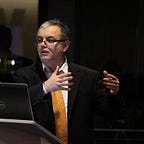Hauntology and Archives: On the Art of Forgetting and Spectral Memories.
In scholastic theories of the mind, phantasms are images assembled in the brain by the senses and stored in memory. Yet phantasms can also be souls haunting the living.
This book by Juan Pimentel, Fantasmas de la Ciencia Española, masterfully explores both meanings of the same word to challenge the public consensus of Spain as a nation of artists and humanists, not scientists. Tourists line up to enter El Prado to admire Velázquez and Goya. Pimentel, however, reminds us that El Prado was originally built at the height of the Enlightenment to be an Academy of Science and a Museum of Natural History. Drawing on a collection of strikingly beautiful and original images produced from the 1510s to the 1950s by cartographers, naturalists, botanists, map makers, histologists, and chemists, Pimentel uses the paradigm of Spain as “art” to turn it onto its head. His chosen scientific images, he argues, are phantasms that keep haunting the living.
Boldly and unapologetically, Pimentel probes how memories have been collectively organized in Spain to forget. Like Goya, Pimentel has created a bewildering masterpiece on hauntology, that is, an ontology of phantasms. Whereas Agnatology is a study on the making of ignorance, Hauntology is the study of specters that cannot be silenced or ignored, print, archives, epistemology, and historiography notwithstanding. Pimentel’s work is as important as Trouillot’s Silencing the Past because it elucidates the mechanisms of power and imagination that organize memory and archives.
This book could yield dozens of readings. Here, I focus on only three.
First: The same culture that begat strikingly original and groundbreaking art in Spain also begot great science. Pimentel, for example, shows the explicit epistemological parallels between the Baroque genre of vanitas and still-lives of Antonio Pereda and the late-17th-century prints of microscopic osteology of the unpublished Anatomical Atlas of Crisóstomo Martínez, a Valencian craft printer, contemporary of Robert Hooke. There were angels in the vanitas of Antonio Pereda who drew exquisite still natures of skulls and walnuts (as representations of the brain). But angels in Baroque culture were also allegories of deeper forms of observation beyond surface appearances. Epistemologically they were the equivalent of microscopes. The great science of the Spanish monarchy had a clear, tantalizing degree of artisanal and artistic creativity as witnessed by the nearly 7,000 botanical illustrations that José Celestino Mutis commissioned to a school of some 60 botanical illustrators in Nueva Granada and by the photography and illustrations of Santiago Ramón y Cajal’s histological studies of the cerebrum and cerebellum.
Second: Ways of remembering are mostly about forgetting. Pimentel shows throughout that the archive of modernity as science has a spectral dimension in Spanish culture, for it is difficult to locate. It is not only that many studies never made it into the printing press, like Mutis’s or Martinez’s. It is also that the collections were simply not properly protected. Using the case of the nearly 1200 illustrations of the natural history of Francisco Hernández in the 1570s in New Spain, Pimentel shows that none of them survived except as modified prints in the works of that Academy of the Lynx and those of the Jesuit Juan Eusebio Nieremberg. Although Hernandez’s originals disappeared in the fire of El Escorial in 1671 (the images were hanging on the walls of the monarchy’s most intimate spaces), copies were made nevertheless (as plenty of contemporary references to alternative sets suggests).
Pimentel offers an acute reflection on a different type of erasure, including the failure to safeguard collections. Like much of the Spanish archive of knowledge, it is likely that Hernandez’s copied images might one day appear in a private archive. Pimentel dwells throughout on the sin of institutions that let collections be pillaged or rot, including even those of the patron saint of modern Spanish science, Cajal’s.
Spanish science is spectral, however, because it is also difficult to see. Pimentel explores the ways in which the contributions of Spaniards were erased by foreign copyists of extant archives in the same way that Spaniards silenced the contributions of myriad indigenous peoples in Spanish America to the making of early modern cartography, natural history, and cosmographies.
Third: The discourse of Spain as non “European.” Pimentel’s greatest insights are his desegregation of a culture of self-deprecation that renders impossible and thus invisible non- artistic contributions to knowledge. Pimentel explores the “Regenerationist” movement produced by the imperial loss of Cuba, the Philippines, and Puerto Rico. The new generation revived the institutions of science in the peninsula by financing postdoctoral training in Germany, England, and France. Yet this generation was also prone to read Spain as an “invertebrate”: a spineless communal creature lacking in higher evolutionary mental faculties, as Cajal put it. Pimentel shows that the late-19th-century creators of the geological maps had already prefigured this dismal reading of Spanish national character. More than fatalistic, it was deeply racist, projecting Spain’s past back onto a purported uncivilized Africa. According to these geologists and paleontologists, Spain was nothing but the geological and evolutionary prolongation of the African continent.
Despite his critique of these tropes, Pimentel often echoes Cajal’s pessimism. Yet, unlike Cajal, Pimentel does not see ‘backward’ Spain as lying outside an idealized European culture. In a very telling chapter about the life and works of the mid-20th-century chemist Piedad de Cierva, Pimentel identifies in the disciplined, horizontal, non-preprocessing modesty of this female chemist a model for Spain’s knowledge institutions to emulate. During the Civil War, De Cierva was a Falangist; she eventually became a lay member of the Opus Dei. A liberal Manichean reading of Spanish history would have located De Cierva as emblematic of the religious-political culture that had kept Spain outside Europe, the antithesis of Cajal. Pimentel explodes such simplistic narratives.
Pimentel has produced a provocative, deeply learned, and beautifully written book that urgently demands translation into English.
